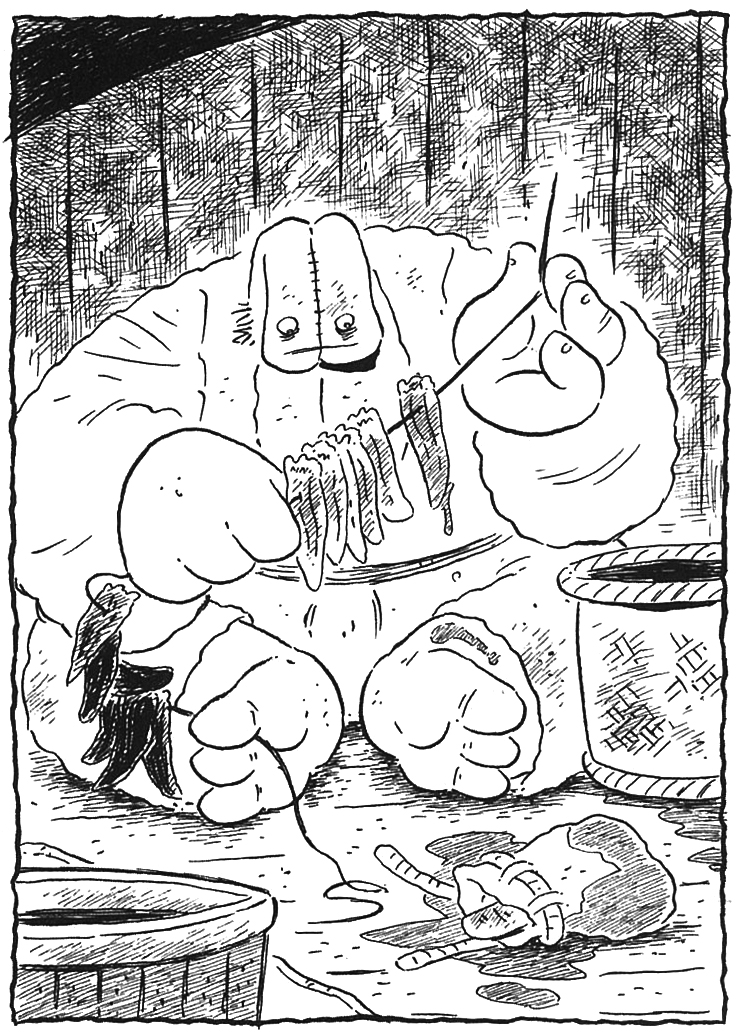 Artist and cartoonist Chris Wright lives in Richmond, VT and was awarded a fellowship at the Center for Cartoon Studies in 2008. His first comics work called Inkweed was published by Sparkplug Books in 2008. Blacklung is his latest book, published by Fantagraphics. My review of it can be found here, his work and blog updates can be seen here.
Artist and cartoonist Chris Wright lives in Richmond, VT and was awarded a fellowship at the Center for Cartoon Studies in 2008. His first comics work called Inkweed was published by Sparkplug Books in 2008. Blacklung is his latest book, published by Fantagraphics. My review of it can be found here, his work and blog updates can be seen here.
CREATURE DESIGN
A big part of the joy in reading Blacklung is your character design. Would you elaborate on the mix of influences that ended up shaping them?
When I was still in Highschool, I became obsessed with Vaughn Bode. His work had all the sex and violence of mainstream comics I liked but it was also lush, and free in a certain sense. I started aping him, and developed all of these crazy non human characters. I was really into Ralph Bakshi movies around the same time. So, there are a couple of references that will send comics snobs running for the hills. As I left those guys behind, and got into other underground comics, and some of the older stuff I mentioned above, I carried their influence with me a bit. I’m not sure why.
The creatures have a playful, even malleable quality, that allows for an unrealistic amount of physical violence to be inflicted upon them. Do you think that creating highly stylized characters ends up distancing the reader from the violence, thus making it more palatable?
The characters I am working with now, are more or less human, but I don’t regret treating the designs in Blacklung the way I did. They’re mythological characters, in a sense. I didn’t want to introduce “Scarry Eyed Joe” or “ Six Fingered Jepson.” I didn’t want to create comfortable archetypes. I didn’t want human beings. I see Blacklung almost, as an expressionist play. I didn’t want these guys to seem like real people. At the same time there IS a human face behind every mask… Unless you put a mask on a dog, then it’s a dog face behind the mask.
CROSSHATCHING
The crosshatching work in Blacklung has an obsessive characteristic. Its compulsive energy reminds me Terry Zwigoff’s documentary Crumb, where his brother slowly falls into a strange graph mania, filling up book after book with pencil lines and hatchings. Did your cartooning approach jump straight into this kind of mark making, or did it creep out slowly? (Crosshatching is the amalgam of vertical lines drawn on top of horizontal lines to create densities).
When I found the style I more or less still work in, all the obsessiveness was there, which is odd because the style I had been working in previous to that was very clean. I had been working in that clean style through my teenage years, and at some point realized that I didn’t draw anything like my favorite cartoonists. I would have been around 19, and I was looking at a lot of early 20th century stuff, Herriman, Segar, Debeck, Edward Gorey, and also a lot of late 19th century pen and ink illustration.
I began to appreciate line quality, and hatching density, and I found some kind of pleasure in sitting there with the ink and the pen and the scratching sound. Maybe it relates to an undiagnosed condition, but I’ve cut back severely on the hatching in my more recent work. I really was overdoing it for awhile, but I liked the rattiness it brought. I never really used it as a constructive drawing element, more as a graphic one. After awhile I realized that you don’t need that kind of density of hatching to be ratty and graphic. I love pen and ink, I love nibs, I love having the kind of relationship with a pen where as you are working, you can somehow feel the moment when the ink is about to run out, but hasn’t run out yet.
How do you work out a page? Do you find yourself mapping out each one without all the hatch work, only to return to the hatching when you’re in the right frame of mind? Or do you work it all at once?
My pencils are very simple, usually I already know what textures are going where, so I design the panels (and the pages) based on that awareness. Then I attack the panels one by one, and work clean through. Usually I do the basic line work, then I fill in the blacks, and then I do the hatching, because whether the hatching tones work or not depends on their relationships to the blacks. It’s not like my style is super complex, but if the elements in place don’t cohere, the whole thing falls apart.
I think I work a-typically from most cartoonists. Most, I think do drafts and drafts of thumbnails, and layouts, and have the whole thing worked out before they attack the final. It may not be to my credit that I work the way I do, but I find it impossible to do anything but DO the page. I write and rewrite, and rewrite, and rewrite the text, but when it comes to the visuals, I can’t help but be intuitive.
In Blacklung, I began to feel a bit trapped by the visual narrative style I had established. “This character goes here, and this character goes here, and he looks different than he did in that panel that’s a problem.” I would get really stressed out about it. Now I realize that I am not the kind of artist to whom these things matter, because EVERYthing in my process is intuitive. I’m embracing the things I’m good at rather than compromise them with the things I am less good at.
Who do you look to as masters of this kind of hatching and crosshatching?
I’m not sure there are any masters of this kind of crosshatching. As I say, I use it in a very basic graphic kind of way. I mentioned Edward Gorey (image seen above), and Herriman, and Debeck, who are all astonishing in their own spectacular ways, but I don’t have much in common with any of them as a draftsman. Herriman can take my breath away. The calm confident easy richness of his lines, and yet they are also totally dynamic. It’s hard to put into words. It’s like being attracted to a person not many other people see the beauty in.
I don’t have the qualities in my drawing, that he has in his, but I admire the hell out of it, and the school he grew out of. Most of the early newspaper guys were influenced by Charles Dana Gibson, and his acolytes. But then you also had Howard Pyle, whose textures could be fascinating, and Joseph Pennell, and E.W. Kemble, and A.B. Frost, and T.S. Sullivant and later Joseph Clement Cole. On, and on, and on. All of these artists employed crosshatching, but they used it in service of painting with the pen. Mine, is a blunter instrument. But there are many channels to master in comics, and balance is key. Content, and form can’t overwhelm one another.
FORMAT
Frank Santoro once riffed on the idea that “the line I draw is the line you see,” when the question of resizing original artwork came under consideration. Is that something you think about when first putting a project like this together? How big are your original pages?
I draw more or less at around 100%. The pages in Blacklung were reduced a bit, but not by much. You can’t really mess with my crosshatching, or my thinness of line. I actually began drawing a version of Blacklung in a standard comic book size, then I got distracted by another project, and put it aside. I decided to come back to it a couple if years later, and that’s when I went with bigger pages. I have some of the pages from the first version somewhere, maybe I can dig them up.
GRIDS
There is no apparent grid system or pattern to your layouts. It seems more intuitive. What is your process for sketching and mapping out ideas before getting to work on the final version?
I don’t believe in the grid. Not that I think it’s immoral, it just bores me. I don’t see comics strictly as a story telling medium. I think that there is something in the spirit of comics that still hasn’t been explored yet. There are “literary comics” “poetical comics” “cinematic comics” not enough “comics comics.” I also sometimes worry that young cartoonists are more conservative in these regards than older ones. I started Blacklung, as a reaction to some of the “precious” elements around the indie community in that moment. I wanted to make an “art” comic out of a genre subject, and also pay tribute to the “underground” (S. Clay Wilson etc – image seen below) and to the history of comics in general, while hopefully also turning it on its ear. I changed a lot while I was working on this book, and the way I think about comics changed. Right now I am trying to figure out what my version of “comics comics” is.
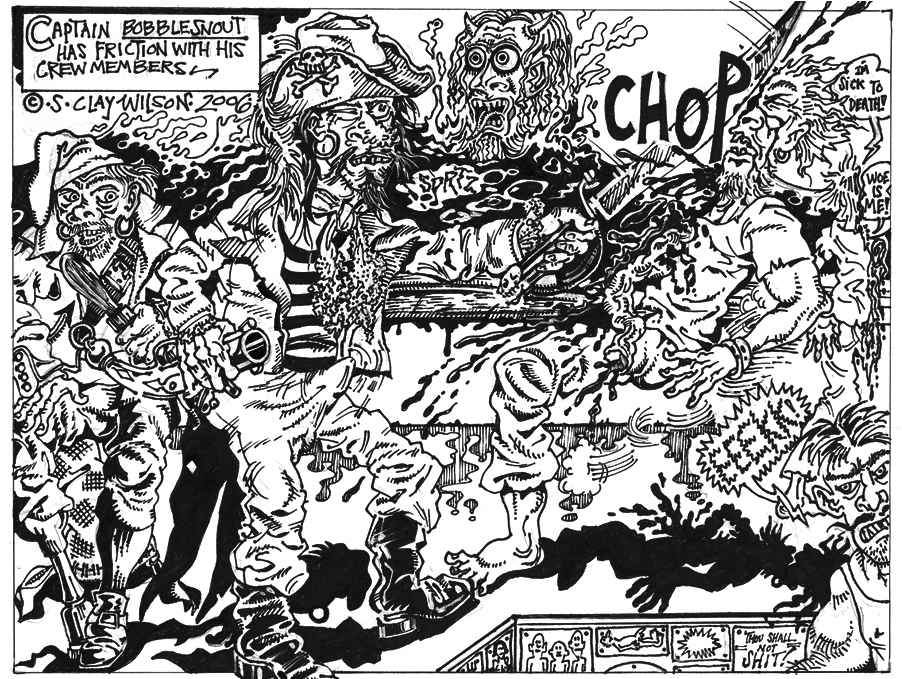 Sorry, you asked me a question. Yes it’s intuitive. As I said, I write and rewrite, but once I’m okay with the dialogue I do, maybe a couple of thumbnails, and then go to the page, and usually what ends up on the page turns out not to be related to the thumbnails. I break the beats down line by line, figure out which images go with what, how it all interacts, and so on. I try to make each page a constructed sequence, with a beginning middle and end, even if that sequence is only part of a larger sequence.
Sorry, you asked me a question. Yes it’s intuitive. As I said, I write and rewrite, but once I’m okay with the dialogue I do, maybe a couple of thumbnails, and then go to the page, and usually what ends up on the page turns out not to be related to the thumbnails. I break the beats down line by line, figure out which images go with what, how it all interacts, and so on. I try to make each page a constructed sequence, with a beginning middle and end, even if that sequence is only part of a larger sequence.
VIOLENCE
From time to time a film like Django Unchained makes me rethink my relationship with violence in entertainment. Tarantino is on record saying that he loves exploring violence in his work because it’s thrilling and fun. I have mixed feelings about it all. I generally dislike and don’t gravitate towards overtly violent entertainment, but a lot of the artists I like have violence as an underlying theme in their work (Herzog, Francis Bacon, Scott Walker). As both a creator of art, but also as a consumer of it, how do you find yourself dealing with and reacting to violence in entertainment and art?
It might be surprising to learn that I’m not a fan of horror movies, and that frankly I think Tarantino is a little bit of a sociopath. I love Scorsese (image seen above), and sometimes people lump those two together because of the violence. But if there is such a thing as an ethical portrayal of violence, I think Scorsese is way closer to the mark. The violence in his best movies tends to be fast, and jarring, and emotional. Maybe it’s a little fetishized, but it’s nothing close to what Tarantino does in that regard, and, I don’t think he gets much of a thrill out of it intrinsically. Except maybe for that little thrill catholic boys get out of being bad. Tarantino’s a cartoon. I usually enjoy his movies, but I don’t really approve of them. I may be the only person under 40 who thought that Kill Bill 2 was terrible.
I don’t know how to defend the violence in Blacklung, except to say that I wanted to completely destroy all of the romantic identifications that come with the idea of Piracy. I mean, I love Errol Flynn movies, but I decided that if I was going to take this premise on, I was going to take it all the way. I don’t think any of the violence in Blacklung goes down as thrilling or fun, and if you remember, even Mose is horrified by what happens at the fort.
There is a hierarchy to the psychopathy in the book. Mose is a rough character, but sadism is foreign to him. Brahm no longer enjoys what he is doing, and is going through the motions. Others are following orders, and only Sweany really takes glee in the suffering… And he’s lost his mind, in every sense. From an entertainment point of view, I don’t think there is any gratuitous violence in the book. I think it all relates to story, and thematic functionality. All of the horrors in the book are based on historical accounts. History is WAAAAY more horrific than entertainment could ever be allowed to be.
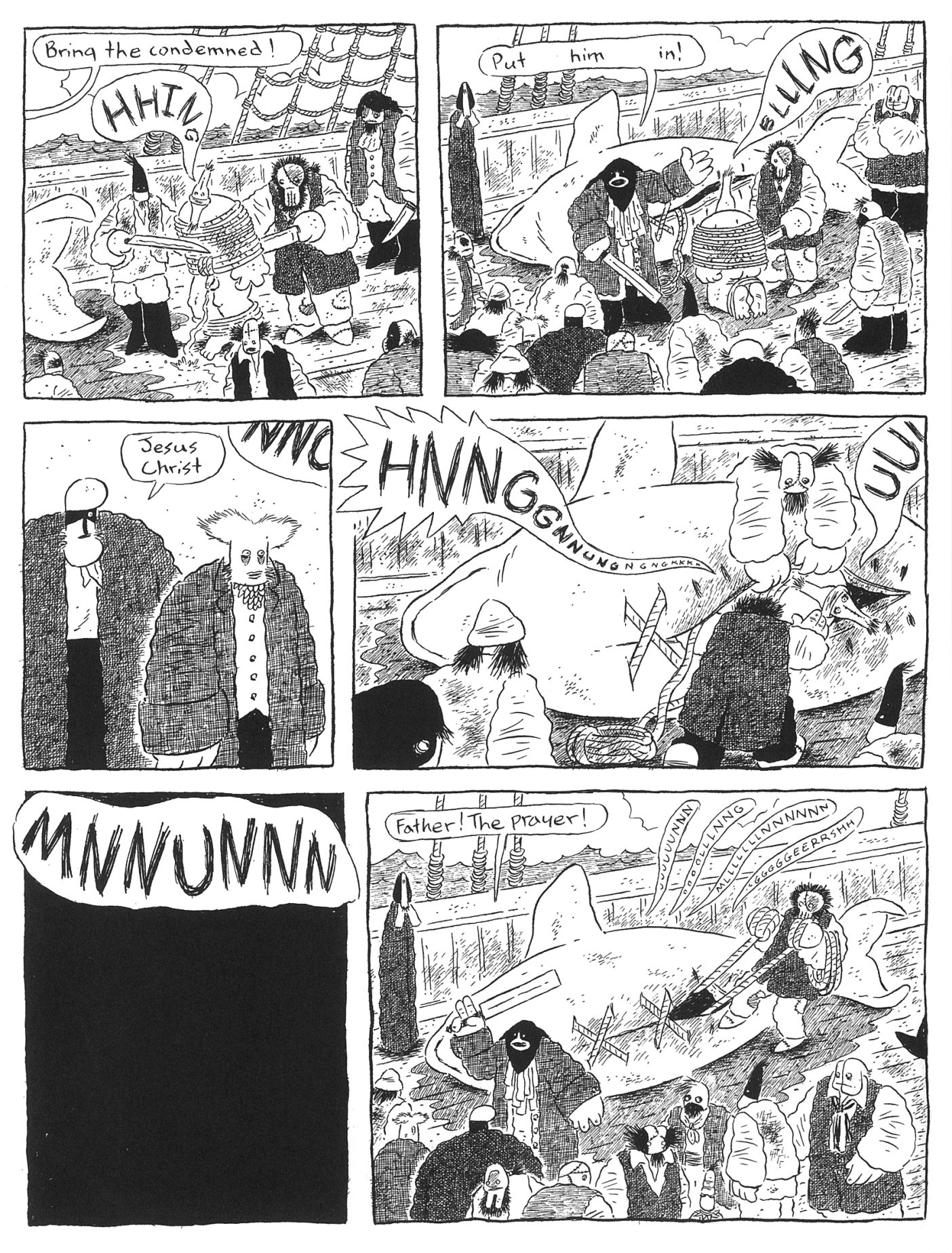 THE WHALE
THE WHALE
Part Belly of the Beast, part Empire Strikes Back—my favourite page in the book is when the Captain punishes a guilty man by stuffing him into a whale and throwing him off the ship. Can you elaborate on how you arrived at this terribly effective dreamlike imagery?
People seem to respond to this sequence. It was actually based on a dream, but not my own, and actually I don’t want to say much more than that in public if that’s okay with you.
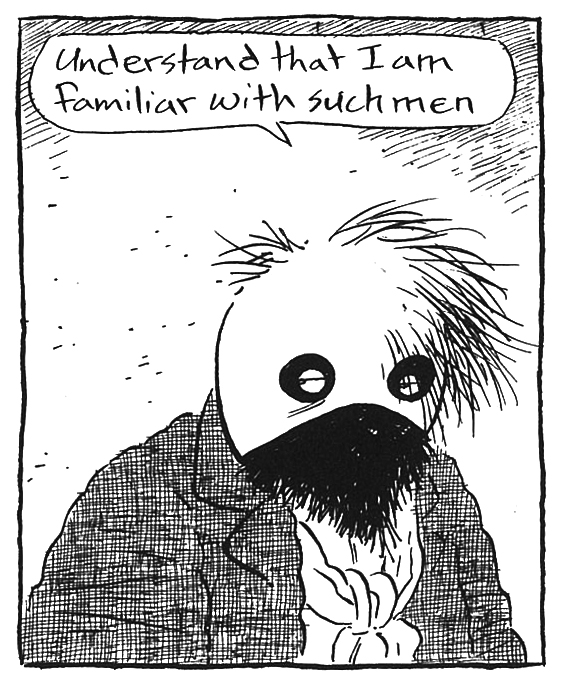 OUTWATER
OUTWATER
On my second reading I was surprised when the character Outwater completely disregards his role as Sweany’s assassin when they get aboard the ship. There are a few indicators in the book that despite the chaos, there is still the need for an honour system. Am I naive in expecting Outwater to keep his word, or is it every man for himself?
No, I don’t think it’s an honour system exactly… I think Outwater has kind of had it with the whole thing from his first appearance, he just hasn’t figured out how to move on yet. I think of him as the smartest of all the characters. He has a loathing of Sweany, but doesn’t want to push the contention too far. He thinks Brahm is a little ridiculous, but finds him worth following, because at least he has something going other than moneylust. He may not be admirable, but at least he is crazy.
And Outwater is actually the one keeping Sweany in check, in a way. He is outranked by Sweany, and Sweany is also stronger than he is, but for all his pretentions, Sweany is not that bright, and Outwater can manipulate him fairly easily. I even think that Sweany is aware of this power dynamic, and knows that he kind of needs Outwater. Outwater leaves the crew of his own free will, and Sweany doesn’t fuck with him. Their fight was fraternal, and Brahm always liked Outwater better, but wanted a psycho as his first mate. The whole relationship is about power dynamics.
Some of this I prefer to keep mysterious. Why did those guys care for Sweany while he was dying? Maybe he was good to them, for all his psychopathy, maybe a few moments of deranged kindness occurred, that made them want to watch over him. Maybe not, maybe they were so terrified of him, that they took care of him for fear of vengeance from his ghost. Sometimes, when you make stuff, you have to give up your intentions, and just let it sit there.
INFLUENCES
I always find it tricky to overtly reference a piece of work from the same medium you’re working in, especially in comics. It feels almost incestual. I recently saw Dumont reference Courbet’s L’Humanite and Paul Thomas Anderson referenced Gursky in Punch Drunk Love, and thought that it really complimented their vision. There seems to be a mix of Melville, McCarthy and David Milch in the attitude of Blacklung. More literature minded. Who where you thinking about, and who do you think seeped in when putting it together?
I may have already answered a couple of these points in previous answers, and I would love to belabor them, but I probably shouldn’t. I have always said that Blacklung is what would happen if Bergman made a pirate movie with muppets. Blood Meridian was a huge influence, as was Bergman, and Tarkovsky… and Fellini was always in the back of my mind (image seen above). Bob Dylan, Leonard Cohen, and Tom Waits.
I came up with Blacklung, before I was aware of Deadwood (image seen above), but once I saw Deadwood, I was relieved to see that somebody else was taking an interest in some of the same ideas. Not that would compare myself to Milch. I do not exist in a space that is close to his literary intelligence.
I have never really been a literary person. I might be a little dyslexic, or maybe I have some weird anxiety around reading prose fiction. Most of my influences are filmmakers, and songwriters. Playwrights to some extent also, but usually in the context of film. I’m not as big a reader as I would like to be. I read an interview with Fellini once, in which the interviewer asked him about similarities in his work to Proust, and Joyce, and Fellini admitted that he had never read either of those authors. And that brought me so much relief, to know that it was possible to make La Dolce Vita, or 8 1/2 without having read Proust or Joyce.
If you just engage deeply enough in the thing you are doing, and you are completely honest with a certain part of yourself, you can do really good shit. It’s not all about book learning… Thank Christ.
OPENING QUOTE
“Old gods are terrible to look at when they weep, all bloated like spoiled fish. One wonders if they ever understand that they have caused their own grief” – The Epic of Gilgamesh
You’ve mentioned that opening up Blacklung with a quote from Gilgamesh points possibly to a the characters being tangled up in events beyond their jurisdiction. Does this reflect a notion that we are less in control of our lives, decisions and free will than we think we are?
I think we construct all these mythologies to give ourselves a sense of control. Even the myth that all you need to do is meet that perfect person, and have that perfect child, and you’ll be good, everything will be fine. We are just apes with defense mechanisms against the void.
That quote is interesting to me for a few reasons, but mostly it’s because the Gods looked down on what they had done and saw that it was not good. They had the self awareness and lack of selfishness to mourn over the consequences of their actions. In Blacklung, Brahm comes to a similar kind of self awareness. We walk through life in our passion, and conviction, or in our spite, and are only actualized when we realize how wrong we are to feel any of those things in the configuration we originally found them in. Once this is understood, the configuration again becomes original. It’s a continuous process ended only by death. We can only aspire to our higher selves through humility, and a glad resignation. I am horrible at all of those things.
Brahm is going through the motions in that torture scene. That’s why he pours his history out to Isaac shortly after. Something about their contact has made him realize that his intentions are empty. He is just staring into the evil he has created, and he can’t make it heroic anymore, he can’t mythologize it. When he rejects his own mythology, he is finally embraced by a “higher power,” and, in that moment, is sent into the underworld. He steps down into the ocean, and, water being a symbol of the unconscious, finally into his own mind. It’s the moment where he liberates himself from himself, and realizes that he has to destroy what he has created and die in the process. His moment of self actualization, is a moment of intrinsic cognitive self destruction. To answer your question… I believe that human beings have the power to make choices, but I don’t think they have much say in the creation of the machine that ends up making those choices.
Joseph Campbell says that, “the achievement of the hero is one that he is ready for and it’s a manifestation of his character. The landscape and conditions of the environment match the readiness of the hero. The adventure that he is ready for is the one that he gets.” I would need to re-read the ending again to be sure, but It seems like Isaac experiences an awakening by the end of the story—that the level of violence surrounding him frames his existence in a way that is ultimately liberating. He seems humbled by the recognition of a force bigger than him, an annihilation of the self. Since he survived, does that mean he was ready for the adventure he was given?
I actually did a lot of thinking about Joseph Campbell while I was writing Blacklung, and I wanted to play with certain mythological motifs. I wanted to engage with the hero’s journey, without the forward momentum those stories usually provide. At the end of Blacklung, the villain is the one who is changed. Isaac, while maybe more adapted to his circumstances, remains, for all intents and purposes, very little changed. He is just a shell, in a world he thought himself above. In the last panel he is faced with his books, and his supplies. There is still the potential for regeneration, and transformation, but for what, or to what, or to whom?
He still hasn’t achieved the wisdom Brahm acquired, and the question at the end of the book is will he bother to try? It’s a personal matter, when ego is divorced from an appreciation of art, and wisdom texts. When you aren’t just reading things, and talking about things to prove that you are so smart, and are actually evaluating, and processing them as they relate to your own actual heart. It seems cruel to leave Isaac on that beach, but really he was always on that beach he just didn’t know it.
—
Thanks to Dimitrios Koussioulas for helping with copy and editing.
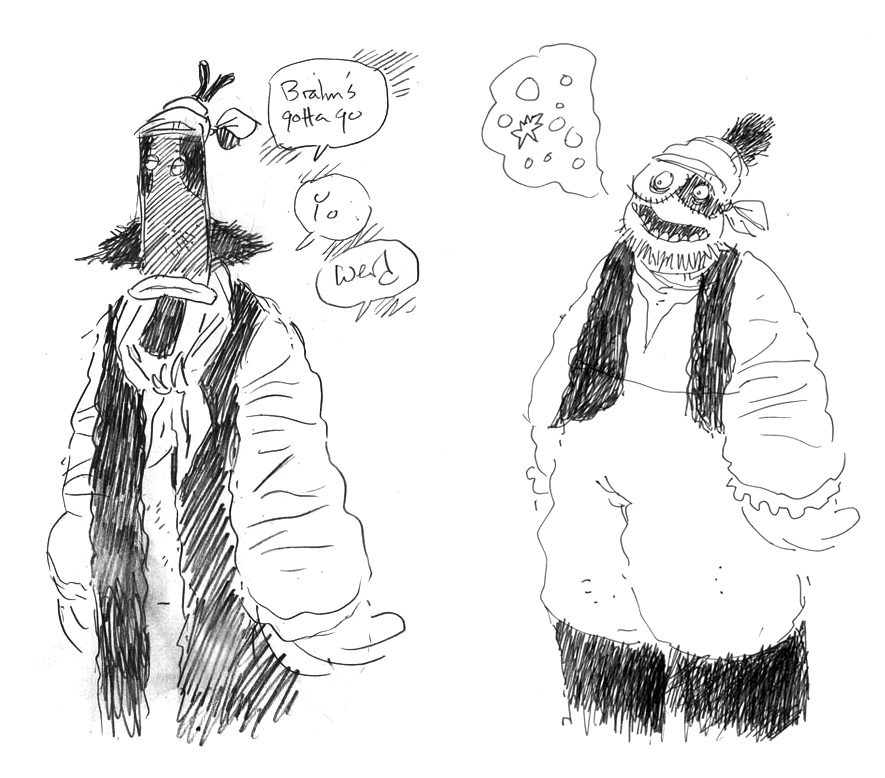
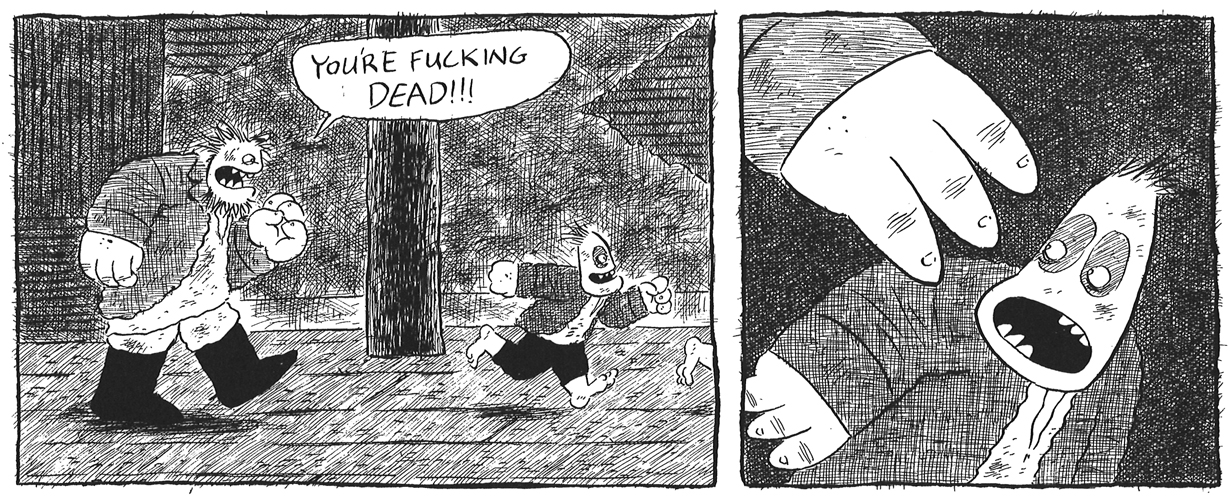
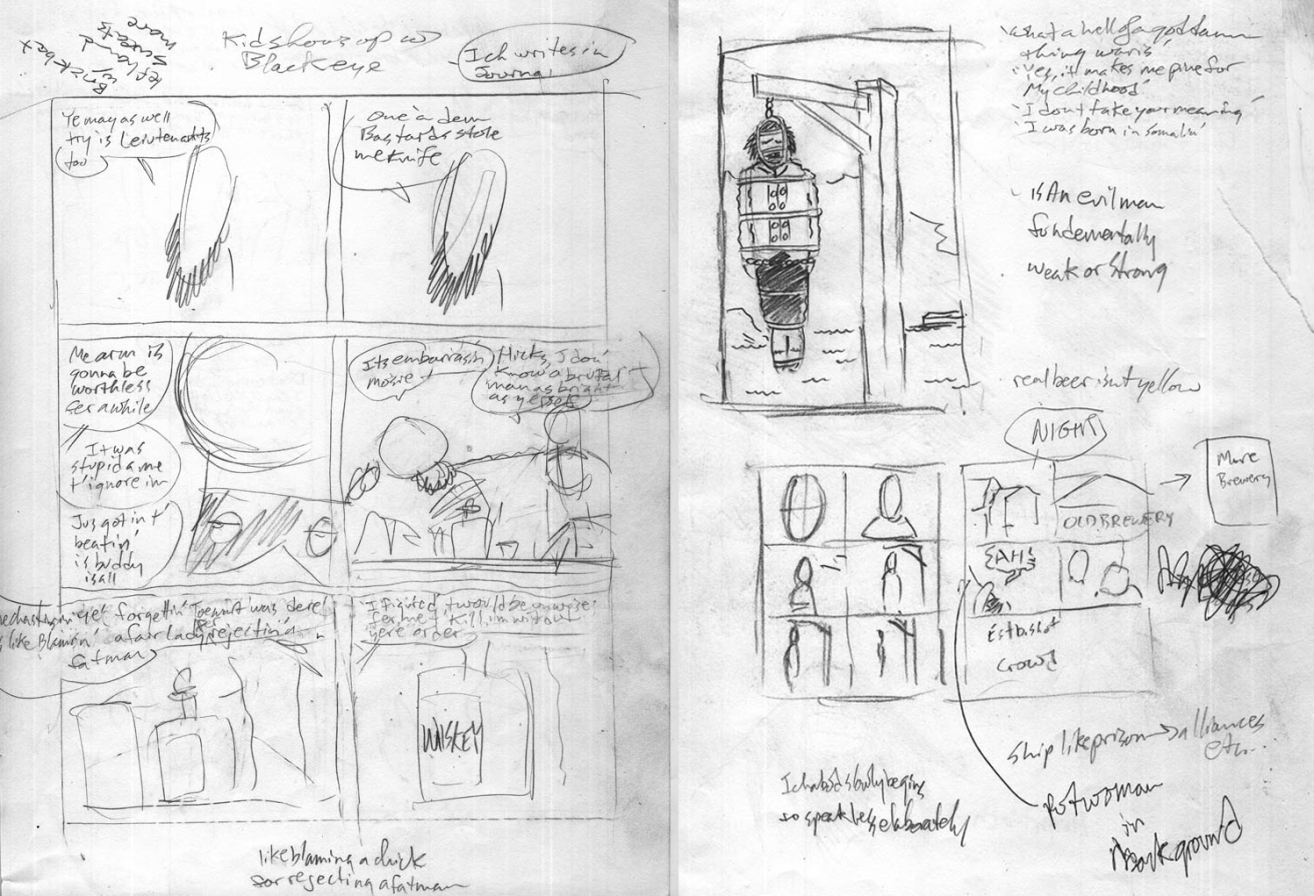
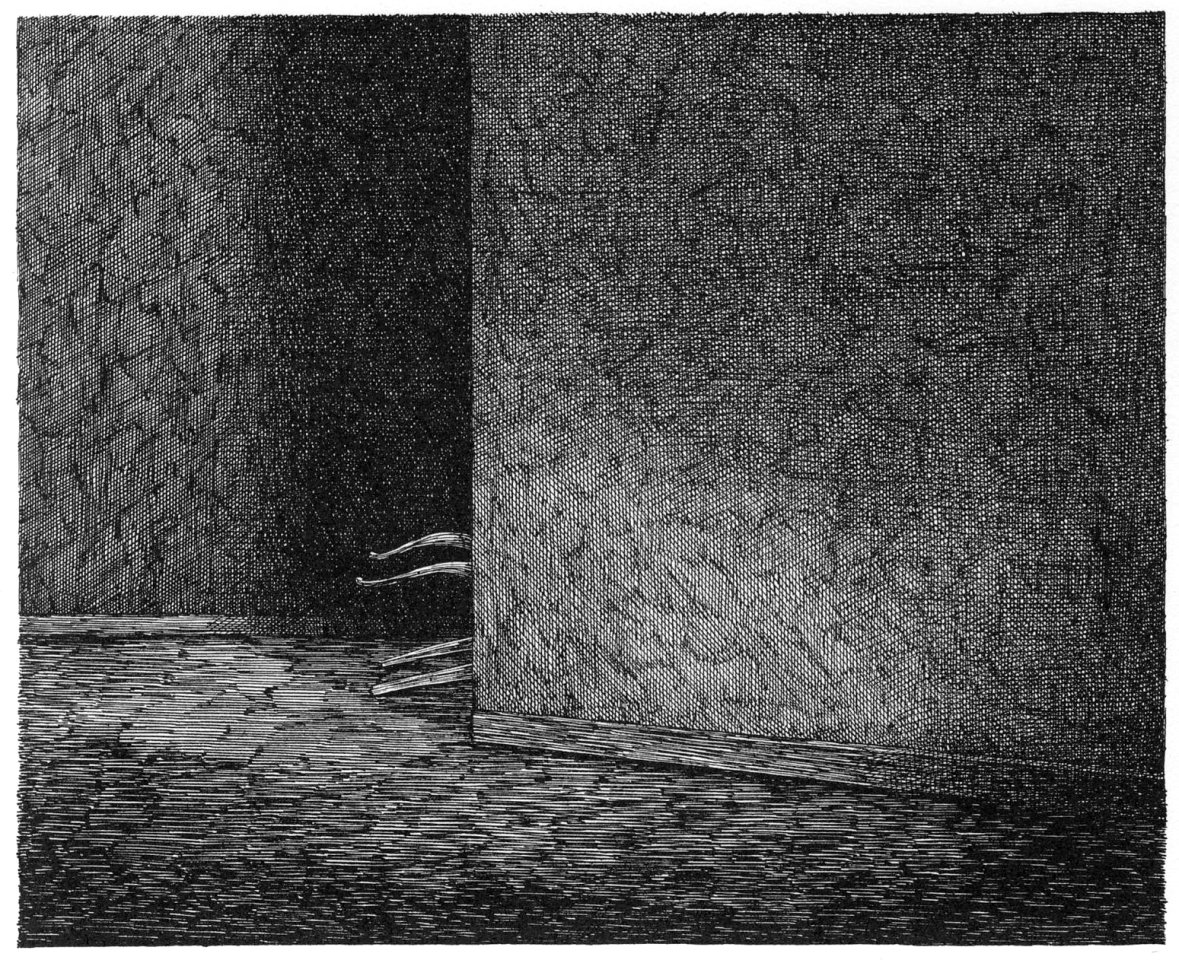
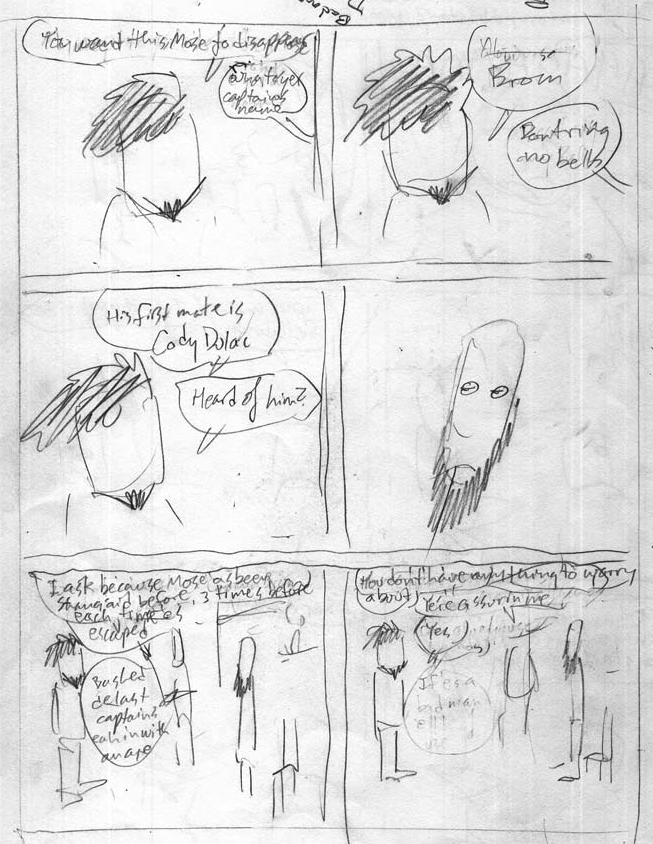
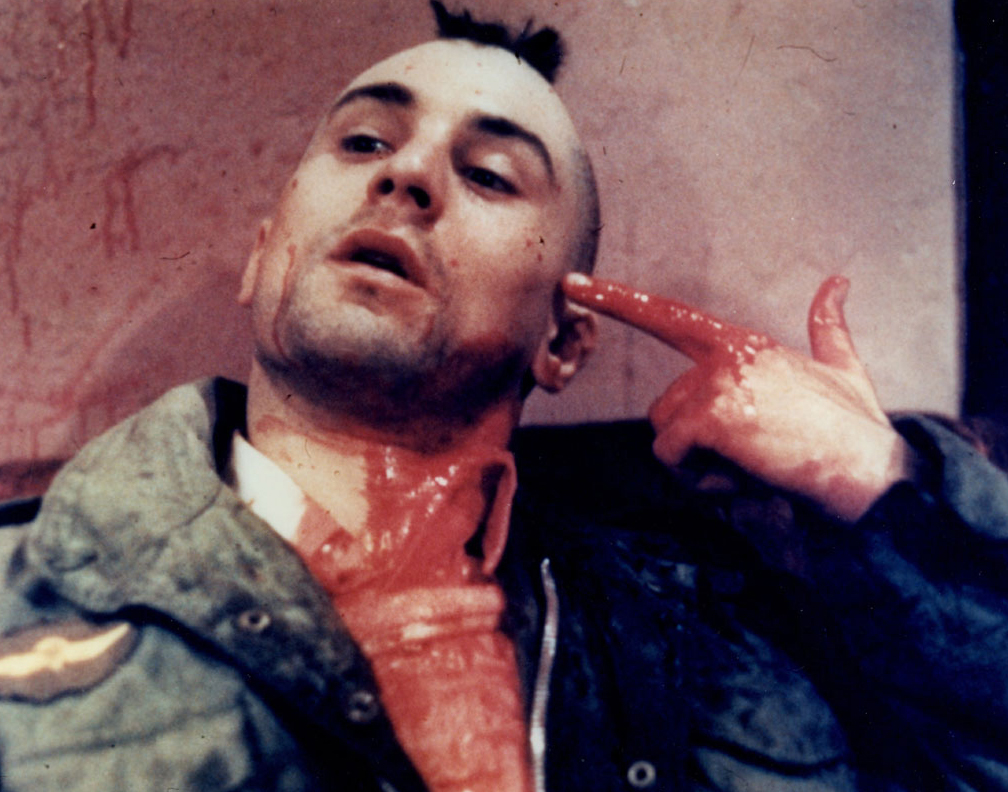
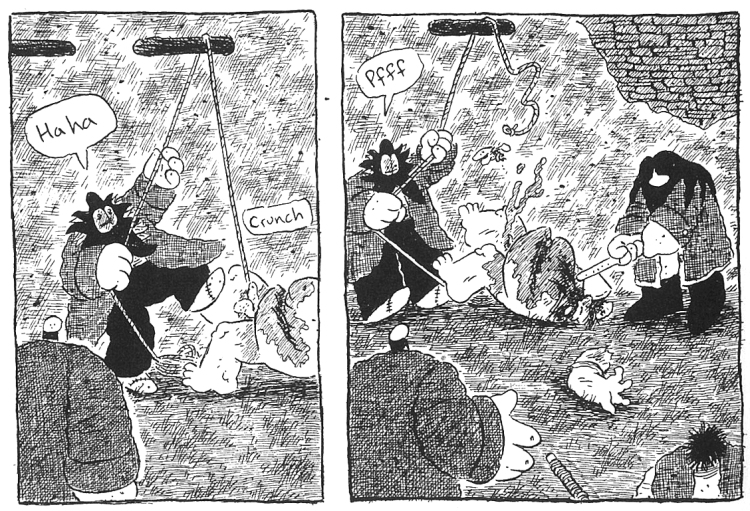
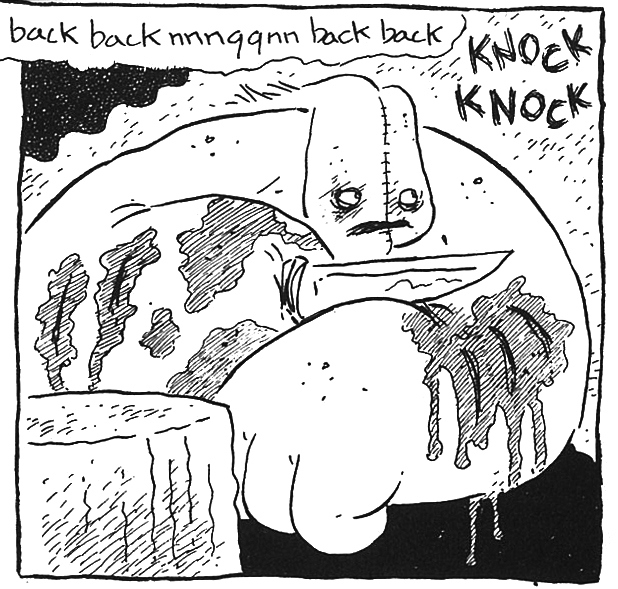
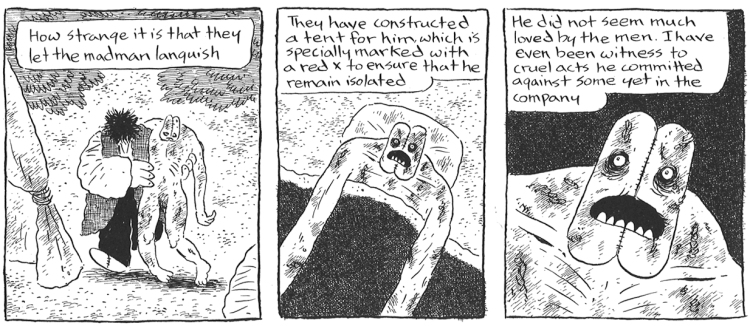
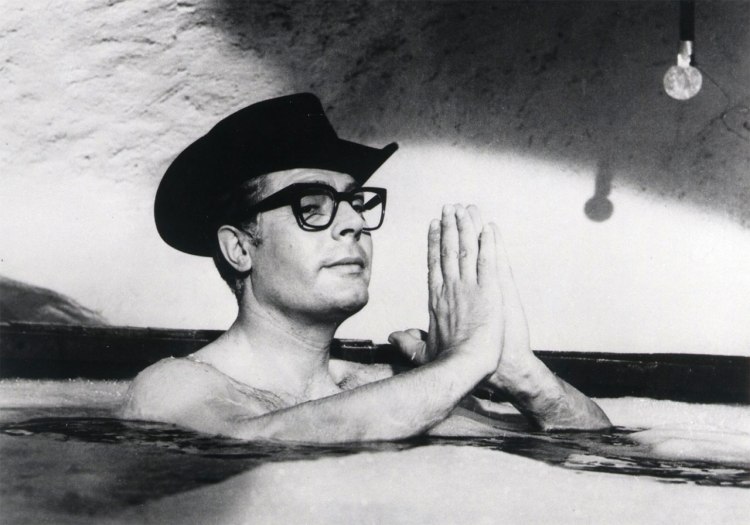
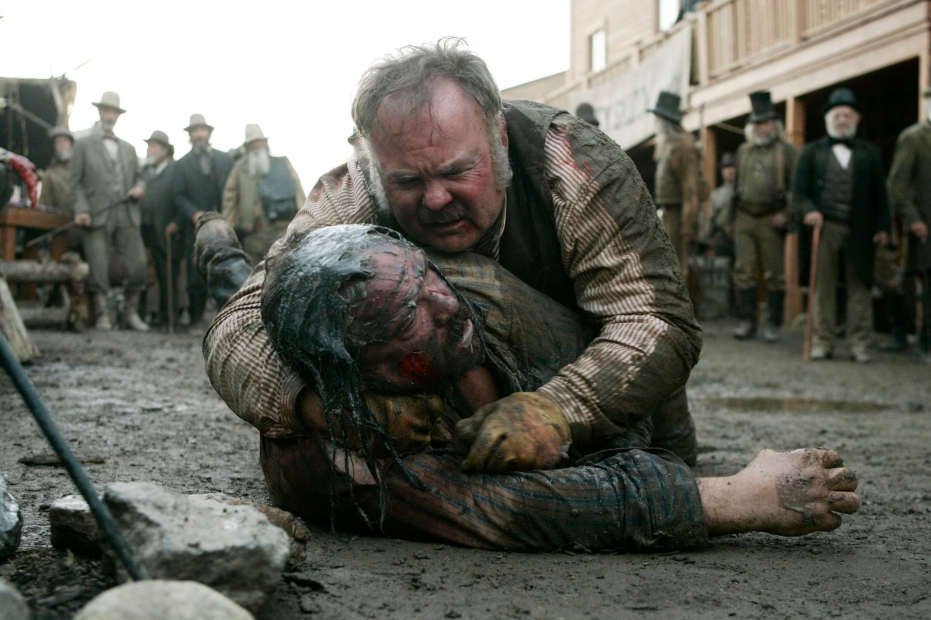
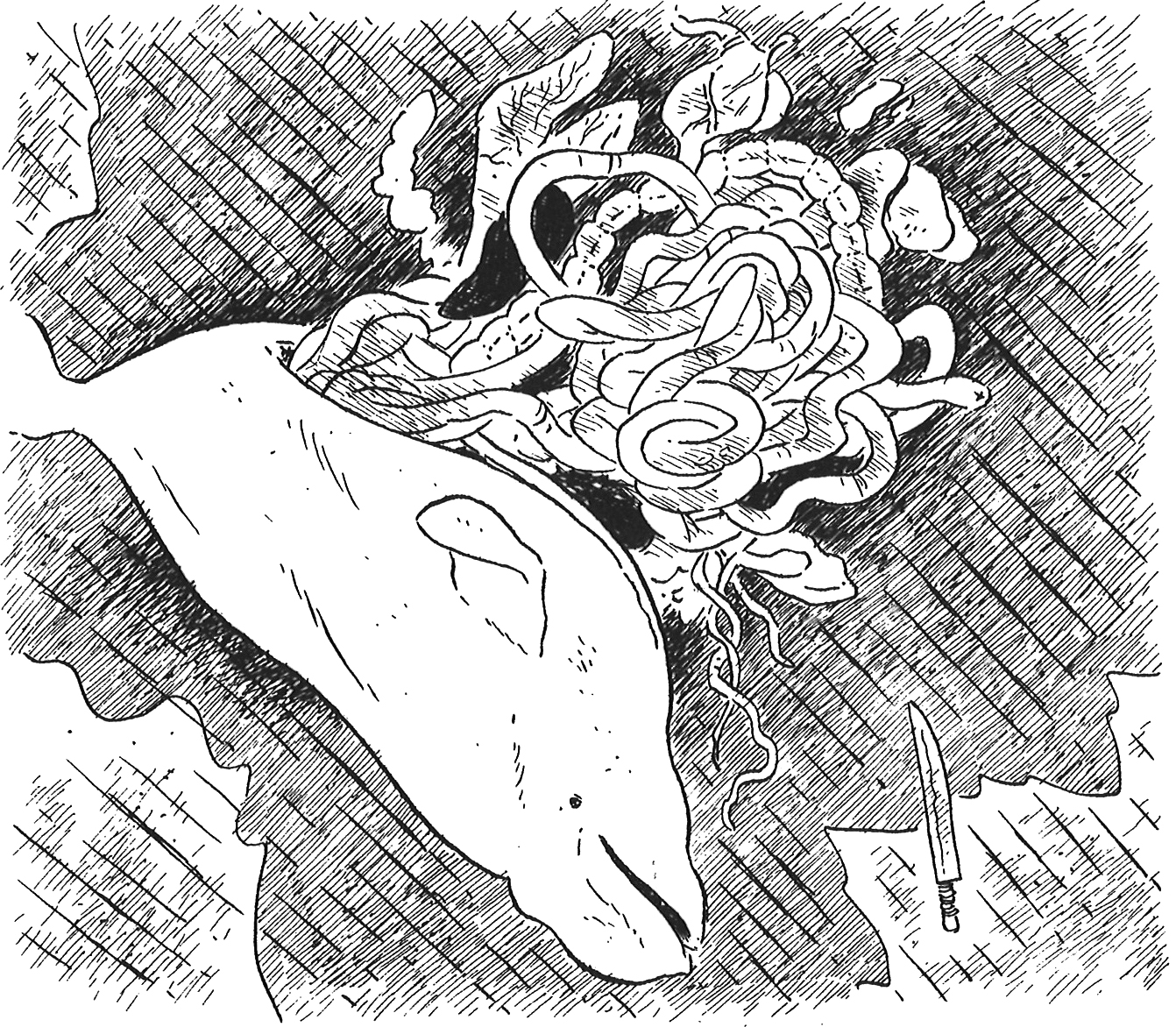
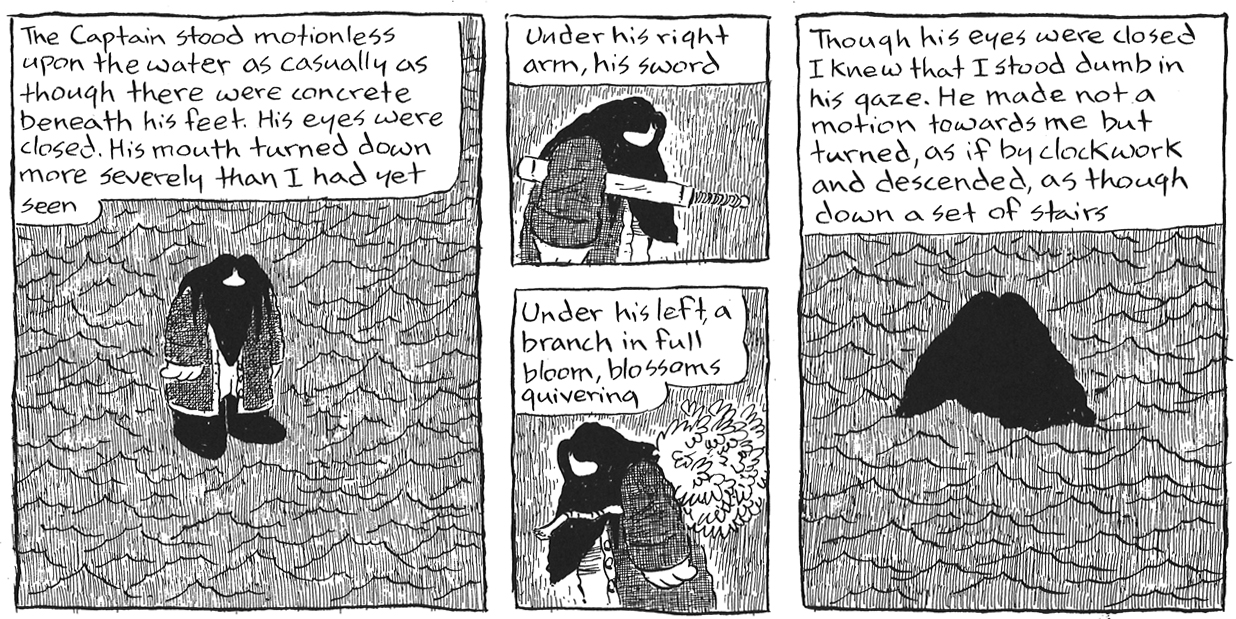
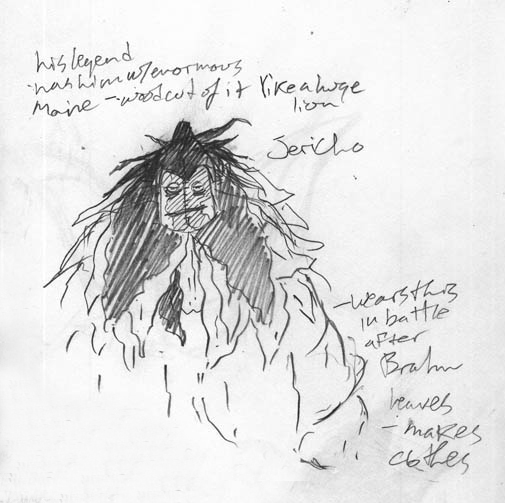

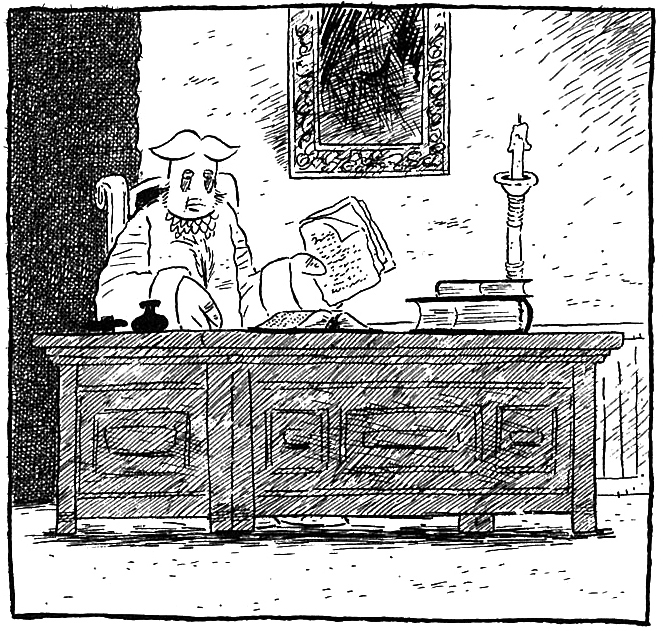
I think that Blacklung is one of the most mature literary works ever to come out of the comics medium, and am always grateful to get a peek into Wright’s process. Thanks for the great interview and the insightful questions.